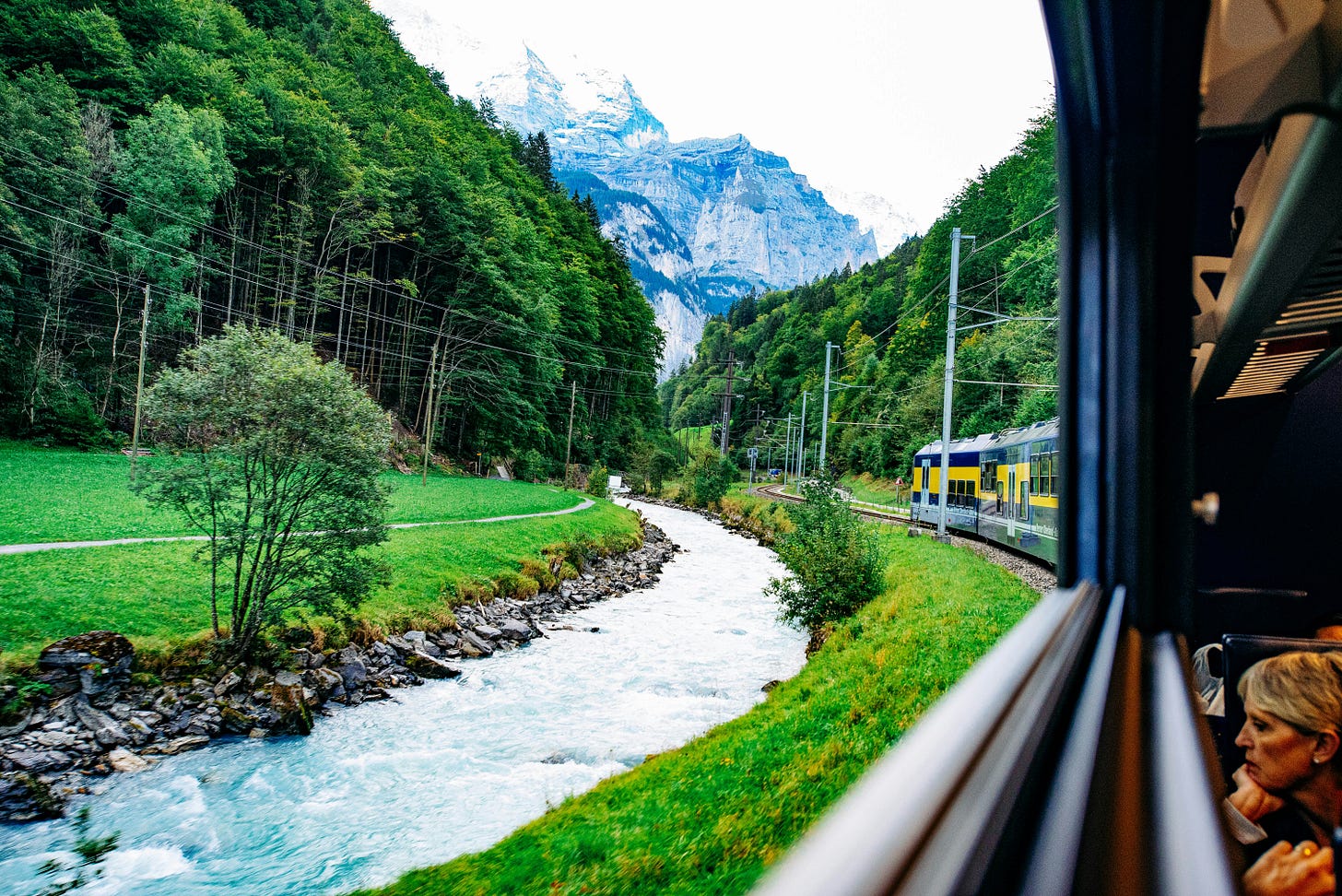Between One Nomad Home and the Next: Why Trains Might Be the Missing Chapter in Your Travel Story
Flying is great. But have you ever wondered what exists between the two places where you actually live?
Digital nomads don’t “visit.”
They inhabit — but in chapters.
Two months in Lisbon.
Ten weeks in Ljubljana.
A season in Valencia.
A quarter in Palermo or Porto.
Your life is a string of small, temporary homes stitched across Europe.
And between one and the next?
Usually: an airport, a gate, and three hours scrolling through Skyscanner pretending to be productive.
But here’s the thing no one tells you:
you’re missing the best part.
As nomads, we spend our lives deeply embedded in Point A and Point B — but we almost never see the world that lies between the places where we live.
And the easiest way to fix that is the most overlooked:
take the train.
Not out of nostalgia.
Not out of guilt.
Simply because it makes your nomad life richer, slower, and more interesting.
Flying gets you there. Trains show you everything in between.
Let’s be clear: planes are not the enemy.
We love a cheap direct flight as much as anyone who’s ever escaped a rainy Tuesday in Berlin for a sunny Thursday in Lisbon.
But trains do something aviation cannot:
they turn a transfer into a journey.
Here’s what trains give nomads — and why more of us are rediscovering them:
1. You actually see Europe
Not from above, not filtered by clouds, not through an airport window.
You see villages, rivers, the weirdly photogenic industrial zones, the vineyards, the mountain passes.
You see what Europe really looks like between your bases.
2. You work better
Trains are moving coworking spaces: stable, quiet, with Wi-Fi that often beats airports and cafés.
No turbulence, no random seatbelt signs breaking your flow, no security checks that kill your morning.
3. You reconnect with the “in-between life”
Nomads know a secret: life happens in chapters.
Trains give you the transitional chapter — the one we usually skip.
Some routes that make sense for real nomads (not tourists)
These aren’t “pretty trips for Instagram.”
These are strategic, useful, time-efficient routes that connect actual European nomad hubs — the places people increasingly live for months at a time.
1. Lisbon → Porto → Vigo → A Coruña
Perfect for nomads splitting life between Portugal and northern Spain.
Atlantic views, slow towns, great food, and an underrated creative scene.
2. Valencia → Barcelona → Montpellier → Marseille → Milan
The Mediterranean corridor.
Great if your life floats between Spain and Italy — two massive long-stay nomad ecosystems.
3. Berlin → Dresden → Prague → Vienna → Ljubljana
The Central European spine.
Cafés, coworkings, order, architecture, culture.
A nomad favourite for a reason.
4. Vienna → Graz → Maribor → Ljubljana → Trieste → Venice
Short jumps, beautiful landscapes, and one of the best “Europe in miniature” itineraries you can take.
5. Naples → Salerno → Calabria Coast → Messina → Catania
For nomads based in Sicily or Puglia.
It’s long, yes — but cinematic.
A true travel chapter between seasons of your life.
6. Milan → Zurich → Basel → Strasbourg → Paris
Highly efficient, highly comfortable.
Ideal if you bounce between the Alps, northern Italy, Germany, and France.
The secret: use the train as your “transition ritual”
Nomad life is not tourism.
It’s a sequence of small lives — each with its cafés, routines, coworking favourites, friendships, and grocery stores you temporarily claim as your own.
Moving from one home to the next shouldn’t feel like a logistical blur.
It can become a ritual:
A night in a city you’ve never considered
A half-day in a local coworking on the way
A detour to a small town you wouldn’t fly to
A reset moment — offline, present, unhurried
The train gives you mental space between two versions of yourself.
Between Lisbon-You and Berlin-You.
Between Valencia-You and Ljubljana-You.
You don’t need to replace flying. Just stop skipping the world beneath you.
No manifesto here.
Just a reminder:
Planes move you.
Trains show you where you’ve been.
And for nomads — the ones who don’t just visit but actually live in multiple places — those in-between spaces are part of the story.
Maybe it’s time to start including them.



